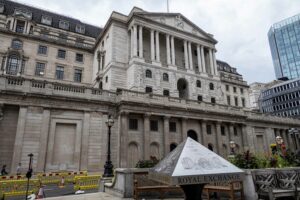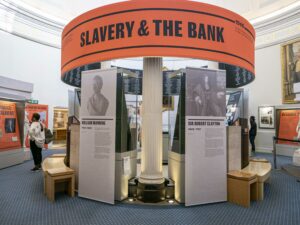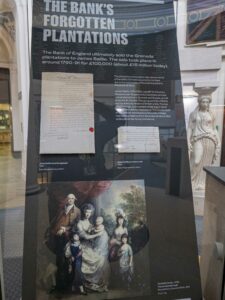Looking for a more unusual visit to a museum? Then why not try the Bank of England Museum which, as well as providing information on the history of the Bank of England, both its foundation in 1694 and its architectural history, also has a new exhibition, Slavery and the Bank.
The new exhibition makes use of the Bank’s extensive archive collection to reveal new information about how the Bank’s history intersected with the story of transatlantic slavery over some 300 years. It was during that time that over 12 million African people were torn from their homes and families and transported to Caribbean islands including Jamaica to live out the rest of their lives as enslaved workers on sugar plantations.

The Apology
A number of the Bank of England’s former directors or governors were involved in the slave trade, and in the summer of 2020 the bank issued an apology, removing eight portraits and two busts from display. The exhibition does not ignore the involvement of these former directors and governors but mentions some by name, and lists in detail their involvement.

For example, following the Abolition of 1833, John Reid, governor from 1839-1841 claimed compensation for the loss of 3,100 enslaved individuals who had worked on his plantations. The compensation came to more than £6 million in today’s terms.
One former director Humphrey Morice, – nicknamed the Prince of Slavers as he ‘owned’ 30,000 enslaved individuals – embezzled Bank funds to the value of £6.9 million.
The exhibition also mentions William Beckford, twice Lord Mayor of the City of London, who used his fortune derived from plantations he owned in Jamaica to build much of Georgian Bath.
Remembering the enslaved
Crucially though, the exhibition seeks to remember those enslaved men, women and children whose free labour furnished the comfortable lives of the plantation owners, 3400 of whom lived in England. Little was known about them – until recently..
A document discovered by chance in the bank archives reveals how In 1774, following a default on a loan for two plantations in Grenada, 599 enslaved Africans became the property of the Bank of England. The enslaved lost their homes, lives, status, family, freedom and cultural identity. They lost their African names and were given new European names in their place. Those names are listed in the document and are now on display in the museum in the central exhibit under the rotunda.

What became of Bartholomew, Rodney, Charles, Rose, Jean Baptiste and Catherine history does not record. But it is right and fitting that we stand in the heart of the Bank of England, look up and read the names of each and every one of those individuals who suffered – so that Europeans could enjoy sugar in their tea. There is plenty of food for thought in this revealing exhibition.
Visiting the Exhibition
The Bank of England Museum: entrance on Bartholomew Lane, London EC2R 8AH is open Monday to Friday 10.00-5.00 pm. Also open late every third Thursday of the month until 8.00pm.
Find out more about the City of London’s connections with the Slave Trade by booking a place on Six In The City’s Slavery and the City walk.
